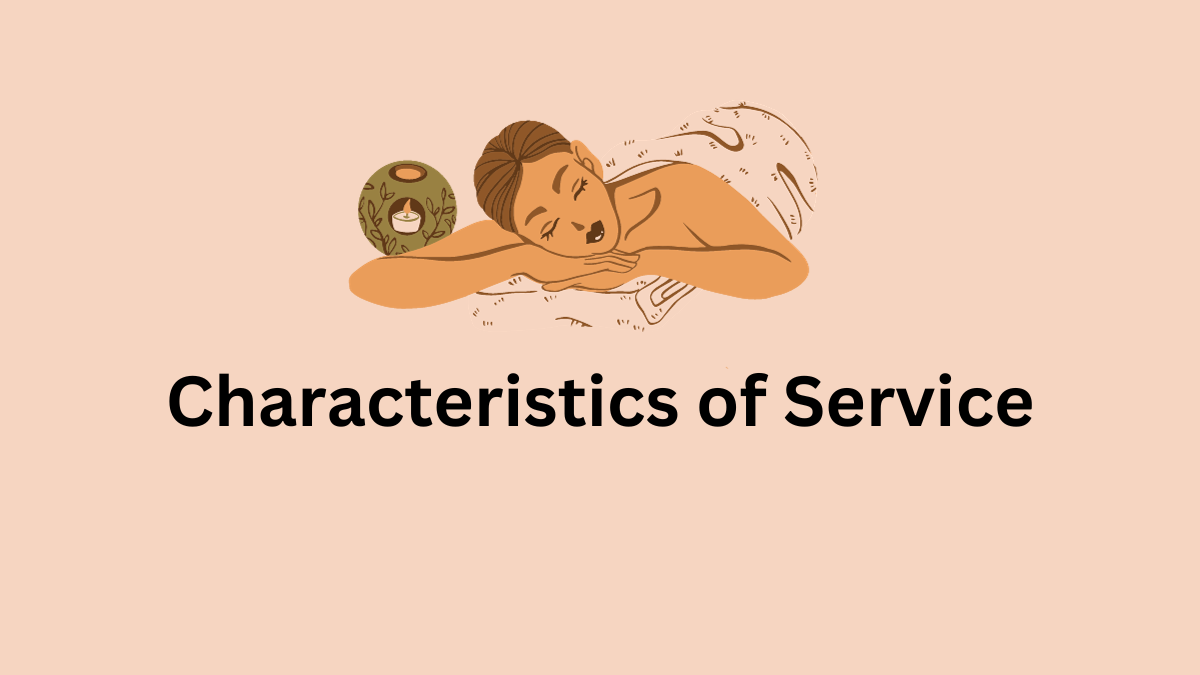Characteristics of Service
A service is a benefit or satisfaction that we can not see but feel and has the ability to satisfy our needs. The following are the six key characteristics of service in marketing:
Intangibility
The first characteristic of service is, that it is intangible in nature. Intangibility in services refers to their lack of physical presence. Unlike products that you can touch, services are intangible, making them challenging to grasp with the senses. This characteristic often poses a marketing challenge, as businesses need to find creative ways to make intangible services tangible to consumers.
Example: Consider education. You can’t touch the knowledge being shared in a classroom; it’s a service that you experience and learn from, but it doesn’t have a physical form. However, educational materials like books and online resources serve as tangible representations of the intangible service of learning.
Perishability
Perishability emphasizes the time-sensitive nature of services. Once a service is offered, it can’t be stored for future use. This means that service providers must manage their resources efficiently, as unused service capacity at a specific time is lost forever.
Example: Think about a theme park ride. If you don’t go on the ride during your visit, the opportunity is gone. The ride’s capacity can’t be stored for the next day; it’s a perishable service that must be utilized when offered.
Variability in Quality
Services often exhibit variability in quality, even from the same service provider. This variation can be influenced by various factors, including the skills of the service provider, the mood of the customer, or even the time of day. Managing and standardizing service quality is a significant challenge in service industries.
Read More: Product Mix Vs. Product Line
Example: Picture a spa offering massages. Depending on the therapist’s expertise and the client’s preferences, the quality of the massage experience can vary. Even in the same spa, different visits might result in slightly different experiences, showcasing the inherent variability in service quality.
Non-Measurability
The concept of non-measurability highlights the inherent challenge in quantifying and measuring services precisely. Unlike products, which often come with standardized measurements and specifications, services are subjective in nature. The assessment of service quality relies on individual customer experiences and perceptions, making it challenging to establish universal metrics.
Example: Consider the purchase of a physical product like a television. You can evaluate its specifications, such as screen size, resolution, and weight, to make an informed decision. In contrast, for services like a spa visit, measuring and comparing experiences based on objective criteria is complex. The quality of a massage or the ambiance of the spa is subject to personal interpretation, and there are no standardized measurements for such experiences.
Read More: What is Product Mix – Definition
No Ownership Transfer
In the realm of services, ownership doesn’t transfer from the provider to the customer. When you engage in a service, you don’t acquire a tangible item to possess. Instead, you gain access to the benefits and experiences associated with the service.
Example: When you hire a professional photographer to capture moments at an event, you pay for their service in capturing and preserving those memories. However, you don’t gain ownership of the actual photographs in a physical sense. The photographer retains the rights to the images, and you receive the service of photography rather than owning the resultant pictures.
People Involvement
This is last in our list of 6 service characteristics. Services significantly rely on human involvement, where individuals play a pivotal role in delivering the service’s benefits and solutions. While technology and automation can enhance service processes, the impact of human interactions remains substantial in shaping the service experience.
Example: Imagine dining at a restaurant. The skills and actions of the chef, waiter, and other staff members greatly influence your dining experience. The taste of the food, the presentation, and the quality of service depend on the people involved. Even in industries adopting automation, such as online customer support, human agents often contribute significantly to resolving issues and creating positive service interaction. People are central to the service encounter, making their involvement a key characteristic of services.
Hence, these are the six key features of service also called qualities of service.
Read Next: Product Line – Definition
Arti Kushmi holds a BBS (Bachelor in Business Studies) degree and shares her business and marketing knowledge through this website. While not writing she will be reading and enjoying the moment.
